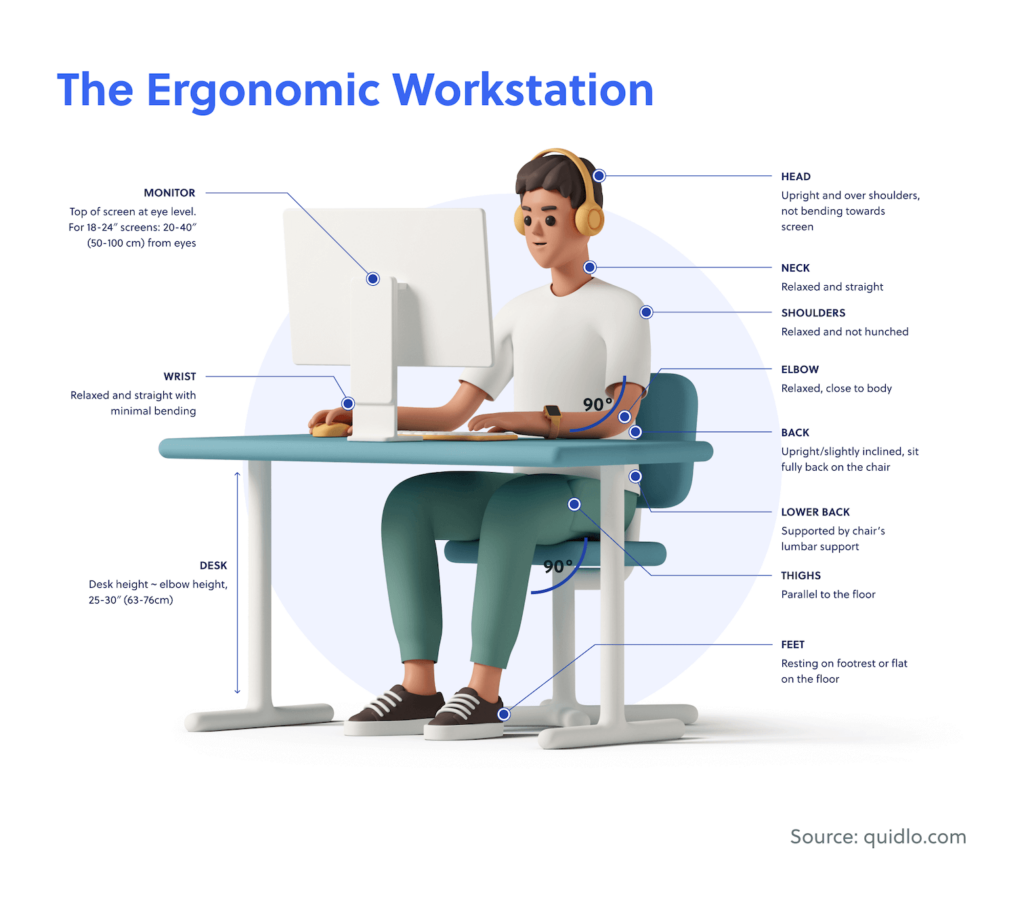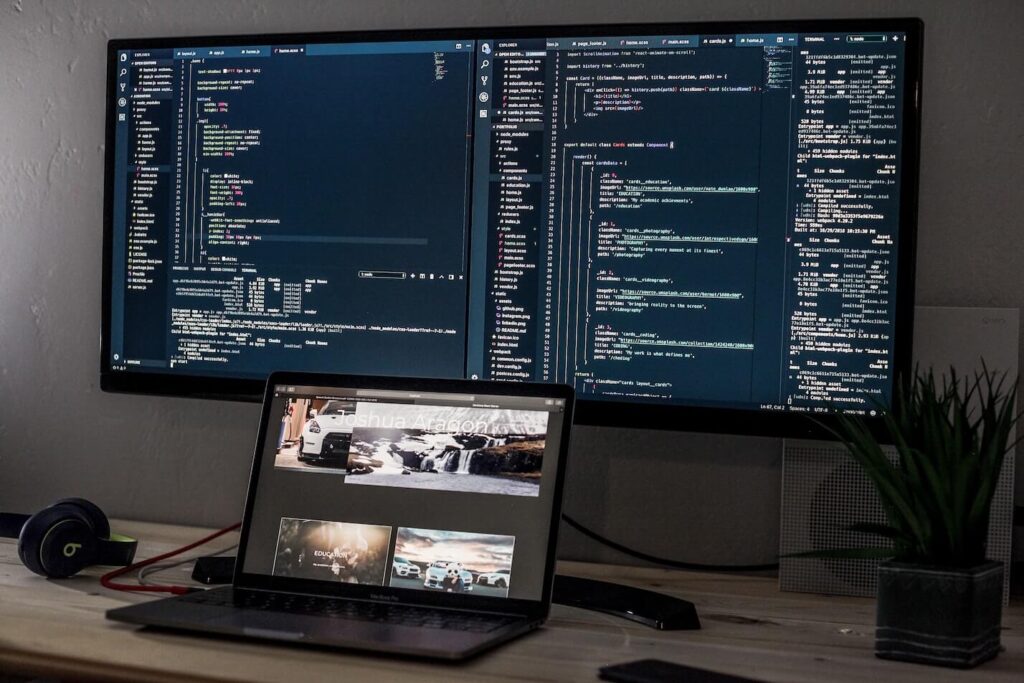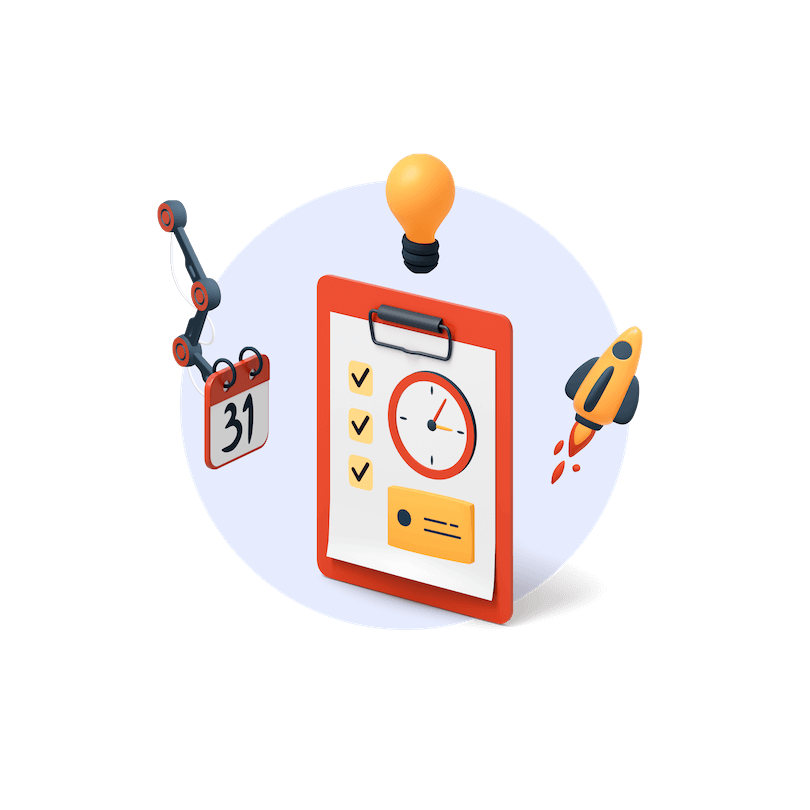Most people spend the majority of their work day sitting at a desk. Therefore, it is important to have a desk that is set up in a way that is comfortable and ergonomic. According to The British Psychological Society, the average person spends about 5 hours and 41 minutes per day sitting at their desk. This means that you could potentially spend over two thousand hours per year sitting at your desk! That’s a lot of time, so it’s important to make sure that your desk is set up in a way that won’t cause you pain or discomfort. Setting up your desk might seem like a no-brainer – after all, how hard can it be to put a few things on a surface and call it a day?
However, according to Forbes, the way you arrange your workspace can actually have a significant impact on your productivity and comfort levels. For instance, did you know that having plants on your desk can improve your concentration? Or that positioning your computer screen at eye level can help reduce neck and back pain? In short, taking the time to set up your desk in an ergonomic fashion can pay big dividends in terms of both your health and your work output. Of course, not everyone has the same needs when it comes to their workspace. If you aren’t sure how to get started, don’t worry; in this blog post we’ll cover all you need to know about desk setup ideas and tips for productivity and desk ergonomics. Read on!
Table of Contents
Why is Desk Setup Important?
Imagine trying to cook a gourmet meal in a cramped, cluttered kitchen. Now imagine trying to get work done at a desk that’s crammed full of clutter and hard to reach. Not ideal, right? The same principles apply when it comes to thinking about your desk setup ideas. A well-organized, functional desk can help you be more productive and efficient, while a cluttered, disorganized desk will just leave you feeling frustrated. You might not think that the way you arrange your desk could have an impact on your productivity, but the truth is that optimizing your workspace can make a big difference. Here are five reasons why desk setup is important:
✅ The right desk setup can help you stay organized
If your desk is cluttered and crammed with papers, it can be difficult to find what you need when you need it. A well-organized desk, on the other hand, will help you stay on top of your work and be more efficient.
❌ The wrong desk setup can lead to pain and discomfort
If you’re constantly hunching over to reach your keyboard or straining your neck to see your computer screen, it’s only a matter of time before you start to experience pain and discomfort. An ergonomic desk setup can help prevent these problems by keeping everything within easy reach.
✅ The right desk setup can boost your mood and energy levels
Studies have shown that people who have an organized and pleasant workspace are more likely to report feeling happy and energetic at work. On the other hand, a chaotic and cramped workspace can contribute to anxiety and stress.
✅ The right desk setup can improve your focus and concentration
When you’re able to focus on your work without distractions, you’ll be able to get more done in less time. A Desk with too much clutter or that isn’t set up properly for your needs can make it difficult to focus on what you’re doing.
✅ The right desk setup can save you time in the long run
Taking the time to set up your desk correctly from the start will pay off in the end by saving you time, improving your team dynamics and making you more productive. Trying to work at a desk that isn’t set up optimally will only lead to frustration and wasted time in the long run.
Negative Impact of Wrong Desk Setup
If you’ve ever had aching muscles or a headache after sitting at a desk all day, you may be surprised to learn that your desk setup could be to blame. Poor posture and incorrect desk ergonomics can lead to a host of problems, including neck pain, shoulder pain, and carpal tunnel syndrome. In fact, a study by the American Chiropractic Association found that more than half of Americans report experiencing some type of musculoskeletal pain as a result of their work. According to a credible source, the following are the five most prevalent issues resulting from an improper desk arrangement:
Reduced range of motion: If your desk is too high or too low, you’ll find yourself constantly reaching and straining to perform simple tasks. This can lead to stiffness and pain in the shoulders, neck and back.
Stress: A cluttered desk can be a source of stress, as it’s difficult to find what you need when everything is crammed into one space. This can lead to headaches, anxiety and difficulty concentrating.
Carpal tunnel syndrome: This painful ailment, which is caused by wrist nerve compression, is frequently exacerbated by poor desk ergonomics. The hands and fingers may experience tingling, numbness, and weakening.
Eye strain: Staring at a computer screen all day can cause eye strain, dry eyes and blurry vision. To avoid these problems, take frequent breaks and adjust your screen resolution and brightness as needed.
Poor posture: Slouching at your desk can cause muscle pain and stiffness, as well as fatigue and circulation problems. Make sure your chair is at the proper height and that you’re sitting up straight with your feet flat on the floor.
The Characteristics of an Ideal Workspace
You’ve probably heard the saying, “a comfortable workspace is a productive workspace.” And it’s true! If you’re going to be spending hours at a desk, you want to make sure you have everything you need to be comfortable. So whether you are working remotely or in office space, here are 10 things that are important to have a proper comfortable workspace:
- A comfortable chair: You’re going to be sitting in this chair for long periods of time, so make sure it’s comfortable! Look for a chair with good back support and adjustable height and tilt.
- A good desk: Your desk should be the right size for your needs and ergonomically designed to reduce strain on your back and neck.
- Adequate lighting: Too much or too little light can be tiring on your eyes. Make sure your workspace is well-lit without being too bright.
- Organized: A messy desk is both an eyesore and a hindrance to productivity. You’ll get more done if you take the time to tidy up your workspace.
- Minimize noise: If possible, find a workspace away from loud noises. If that’s not possible, try wearing headphones or using white noise to minimize distractions.
- Comfortable temperature: If it’s too hot or too cold, you’ll be distracted by trying to keep yourself comfortable instead of concentrating on work. Find a temperature that works for you and keep the thermostat at that setting.
- Personalize your space: Adding a few personal touches to your workspace can make it feel more like yours and help you feel more relaxed and comfortable. Try adding some photos or artwork, or bringing in a few personal items from home.
- Take breaks: Working for long periods of time without taking breaks can lead to fatigue and decreased productivity. Make sure to take regular breaks, even if it’s just for a few minutes each hour. Get up and stretch, take a walk, or grab a cup of coffee to re-energize yourself.
- Seasonally appropriate: In the winter, you might want a space heater; in the summer, a fan could help keep you cool. Consider what season it is and make sure your workspace is comfortable for that time of year.
- Have what you need: This includes both supplies like paper and pens as well as tools like a stapler and tape dispenser. Having everything you need close at hand will help you work more efficiently and avoid frustration.
Ergonomic Desk Setup
You’ve probably heard of ergonomic desk setup, but what exactly is it? In a nutshell, an ergonomic desk setup is a way of arranging your workstation and furniture to minimize strain on your body and promote good posture. Making even small changes to your desk setup can have a big impact on your comfort and productivity. So if you’re looking to improve your workspace, an ergonomic desk setup is a great place to start.

When it comes to creating an ergonomic desk setup, there are four key components to keep in mind: the desk itself, the chair, the display, and the keyboard.
The Desk
Starting with the desk, it is important to make sure that it is the right height for your needs. The general rule of thumb is that the top of the desk should be level with your elbows when you are seated. If you need to make adjustments, there are a few easy ways to do so. For example, you can use a footrest to raise your feet if the desk is too high, or use a stool or similar object to prop up your monitor if the desk is too low.
The Chair
The next component is the chair. Again, it is important to make sure that it is adjustable so that you can find a comfortable position. The seat should be at a height that allows your feet to rest flat on the floor, and the backrest should support your natural curve. In addition, the chair should have armrests that allow you to rest your forearms while typing.
The Display

The third component is the display. When choosing a monitor, it is important to consider both size and resolution. A good rule of thumb is to choose a monitor that is at least 19 inches wide and has a resolution of at least 1280×1024 pixels. In terms of placement, the top of the monitor should be level with your eyes when you are seated.
The Keyboard
The fourth and final component is the keyboard. When choosing a keyboard, it is important to make sure that it is comfortable and easy to use. Most keyboards come with a variety of features that can help you find the perfect fit, such as adjustable legs and palm rests. In addition, many keyboards now come with backlit keys, which can be helpful in low-light conditions.
Tips for Productivity and Ergonomics
If you’re working from home, you might not have given much thought to your desk setup. But if you’re going to be spending hours at your desk, it’s worth taking a few minutes to think about how you can make your workspace more ergonomic and productive. Here are a few tips:
- Keep it clean – A desk cluttered with paperwork and knick-knacks is a desk that’s begging to be ignored. Make it a rule to only keep essential items on your desk, and take the rest to filing cabinets or storage bins. You’ll be amazed at how much easier it is to stay focused when your desk is clean and organized. Also, be sure to dust and polish your desk regularly to prevent build-up of dirt and grime.
- Get a comfortable chair – You’ll be spending a lot of time sitting at your desk, so it’s important to have a chair that’s comfortable and ergonomic. Look for a chair with good back support, adjustable height, and enough cushioning to keep you from feeling sore after long periods of sitting. You may also want to consider investing in an ergonomic desk chair if you suffer from back pain or other issues that make sitting uncomfortable.
- Organize your cords – This one is more about aesthetics than productivity, but it can make a big difference in the way your desk looks (and feels). Tangled cords are not only unsightly, but they can also be dangerous trip hazards. Use zip ties or cord management solutions to keep your cords neat and organized. Not only will this make your desk look neater, but it will also help you avoid those pesky cord tangles.
- Invest in a desk lamp – A good desk lamp can make a world of difference in the way you see your work area. When choosing a desk lamp, look for one with an adjustable arm so you can direct light where you need it most. And be sure to choose a light bulb with a high lumens rating for optimal brightness (we recommend LED bulbs for their energy efficiency).
- Consider a standing desk – If you find yourself sitting for long periods of time, you may want to consider investing in a standing desk. Standing desks have been shown to improve posture and increase energy levels, and they can help reduce the risk of developing health problems like obesity and heart disease. If you decide to get a standing desk, be sure to invest in a comfortable mat to stand on, as well as an ergonomic keyboard tray and mouse pad to keep your wrists from getting too tired.
- Keep essential items within reach – One of the biggest productivity killers is having to get up and down constantly to retrieve items you need for your work. To avoid this, designate a spot on your desk for frequently used items like pens, paperclips, staplers, etc., and make sure they’re always within easy reach. This will help you stay seated and focused on your work instead of becoming distracted by constant movement.
- Personalize your space – A boring desk is an uninspiring desk. Take some time to personalize your work area with items that make you happy and motivated (within reason, of course). Whether it’s photos of loved ones, inspirational quotes, or just some fun office supplies, adding a bit of personality to your desk can make all the difference in how productive you are throughout the day.
- Use desktop organizers – If you struggle with keeping your desk tidy, desktop organizers can be a godsend. These handy devices help keep all of your small items sorted and within reach while taking up very little space on your actual desk surface. From pen holders to paper trays, there’s an organizer out there for just about everything – so there’s no excuse not to put one (or several) to use!
- Keep distractions at bay – It’s hard enough staying focused when you’re surrounded by distractions like noisy co-workers or constant phone notifications – so don’t give yourself even more things to focus on by keeping them right on your desk! Instead, put away any non-essentials like phones and headphones until you take break time.
- Take breaks often – The human brain isn’t built for marathon sessions of non-stop focus – so don’t expect yourself to be able to sit at your desk for hours on end without taking breaks. If possible, try get up and move around every 20 minutes or so, even if it’s just for few seconds. Walking around gets blood flowing to our brains ,which can help boost focus, energy levels ,and creativity.
Putting these tips into practice will help ensure that you have healthy working habits that lead to maximum productivity !
How to Organize Space on Your Desk
We all know the feeling of being buried alive under a pile of paperwork. It’s overwhelming, it’s stressful, and it’s definitely not conducive to productivity. That’s why it’s so important to keep your desk organized. A clean, clutter-free workspace can help you stay focused and motivated, and it can also make it easier to find what you need when you need it. So if you’re looking to boost your productivity (and who isn’t?), here are some things you should and should not do.
- Do schedule some “desk time” into your day. You may not be able to control everything that ends up on your desk, but you can control how much time you spend there.
- Don’t let paper build up. Create a filing system, and make it a habit to file papers away as soon as they come in.
- Do use vertical space. A bulletin board or whiteboard can be a great way to organize paperwork and keep track of deadlines.
- Don’t forget about digital clutter. Make sure to delete any old files or emails that you no longer need.
- Do have a place for everything. Invest in some desk organizers, and make sure that there’s a home for every item on your desk.
- Don’t let your desk become a catch-all for non-desk items. Return anything that doesn’t belong on your desk to its proper place.
- Do clean up at the end of the day. Take a few minutes to tidy up before you leave for the evening, so you can start the next day with a fresh start.
- Don’t put off big projects indefinitely. If there’s something big that needs to be done, set aside some time to work on it instead of letting it languish on your desk forever.
- Do take breaks and stretch periodically throughout the day. Sitting in the same position for too long can lead to back pain and eye strain.
- Don’t forget to add some personalization to your space! A few family photos or favorite trinkets can make your desk feel like home sweet home.”
Useful Accessories for Your Desk
Anyone who spends eight or more hours a day at their desk understands the significance of a well-designed office. Accessories that boost ergonomics and output can help with this. Here are a few inexpensive additions that can make a huge difference if you’re having trouble maintaining comfort and efficiency while working at your desk.
- A desk lamp: A good quality LED desk lamp will help reduce eye strain, headaches, and migraines that can be caused by poor lighting conditions.
- An ergonomic chair: A comfortable chair that supports your back and neck will help you stay productive and focused throughout the day.
- A monitor stand: Raising your monitor to eye level will help reduce neck and back pain.
- A wireless ergonomic keyboard and mouse: Ergonomic keyboards and mice can help reduce hand and wrist pain.
- A standing desk: A standing desk can help improve circulation and energy levels.
- Exercise equipment: A set of dumbbells or a yoga mat can help you stay active while working.
- A whiteboard or corkboard: Having a place to jot down ideas, brainstorm, or make to-do lists can help improve your productivity.
- Decorative items: Personalizing your workspace with photos, plants, or other objects can help boost your mood and motivation levels.
- Storage solutions: Clutter can be distracting and stressful, so investing in some storage bins or shelves can help you keep your desk organized and tidy.
- Healthy snacks: Keeping healthy snacks at your desk will help you avoid junk food cravings and provide you with sustainable energy throughout the day.
Desk Setup Ideas
The desk is often the focal point of the home office. It’s where you sit to do your work, so it’s important to have a desk that meets your needs in terms of both function and style. But what type of desk is right for you? And how can you set it up in a way that promotes productivity and ergonomics? Here are a few desk setup ideas to get you started.
If you’re short on space, consider a wall-mounted desk. This type of desk takes up less floor space and can be easily customized to your specific needs. You can also create a more ergonomic workspace by equipping your desk with a monitor stand and keyboard tray. This will help to reduce neck and back strain.
If you have the luxury of a larger space, you might opt for a traditional desk with plenty of drawers and storage space. But don’t forget about ergonomics! Be sure to position your desk so that the monitor is at eye level and the keyboard is within easy reach. You might also want to consider investing in an adjustable chair to further support your posture.
No matter what type of desk you choose, remember that the key to a productive workspace is all about finding what works best for you. So experiment with different setups until you find one that feels comfortable and inspires you to get down to business.
Final words
While there is no one perfect desk setup for everyone, using the desk ideas and tips in this post can help you create a space that is both productive and ergonomic. Whether you are just starting out in your career or have been working at your desk for years, taking the time to evaluate how you work and make small changes to improve your productivity and comfort can be well worth it. Carpal tunnel syndrome, caused on by nerve compression in the wrist, is frequently brought on by poor ergonomics. Ergonomic desk arrangements are a good starting point for any effort to enhance one’s working environment.
Making even small changes to your desk setup can have a big impact on your comfort and productivity. In the winter, you might want a space heater; in the summer, a fan could help keep you cool. Have you tried any of these tips? What has worked best for you? Let us know in the comments below!







